Overview
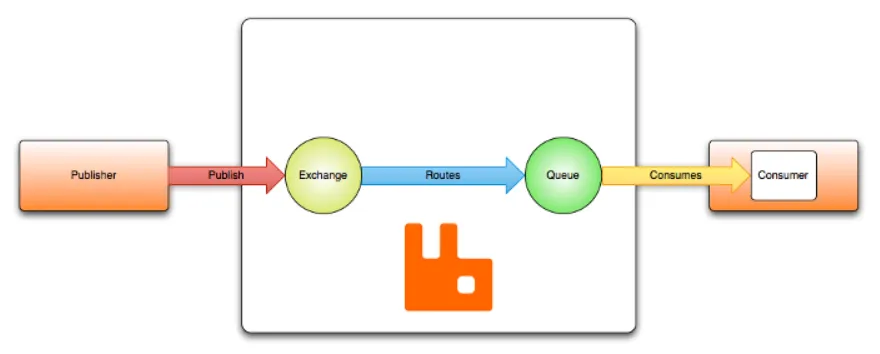
The core dataflow concept follows this sequence (from left to right) : Publisher ➝ Exchange ➝ Queue ➝ Consumer
Messsages are sent to the exchange by publishers
The exchange routes messages to the appropriate queues based on binding (i.e., routing rules)
Consumers receive messages from the queues in one of two ways :
- Push-based (subscribed)
- Pull-based (fetch on demand)
Exchange, Queue, and Binding are collectively referred to as AMQP entities, and the orange rabbit section in the diagram represents the Broker.
Exchanges and Exchange Types
Exchanges receive messages and determine how to route them. Based on the exchange type and bindings, messages are routed to zero or more queues.
AMQP 0-9-1 brokers provide four types of exchanges :
| Exchange type | Default pre-declared names |
|---|---|
| Direct exchange | (Empty string) and amq.direct |
| Fanout exchange | amq.fanout |
| Topic exchange | amq.topic |
| Headers exchange | amq.match (and amq.headers in RabbitMQ) |
The default exchange is a direct exchange with no name (i.e, an empty string), and it is predefined by the broker. When you create a queue and give it a name (e.g, search-indexing-online), the broker automatically binds that queue to the default exchange using a routing key (also known as binding key) with the same name.
Direct Exchange
- A direct exchange routes messsages to queues based on the message’s routing key
- It’s commonly used for unicast and multicast message delivery
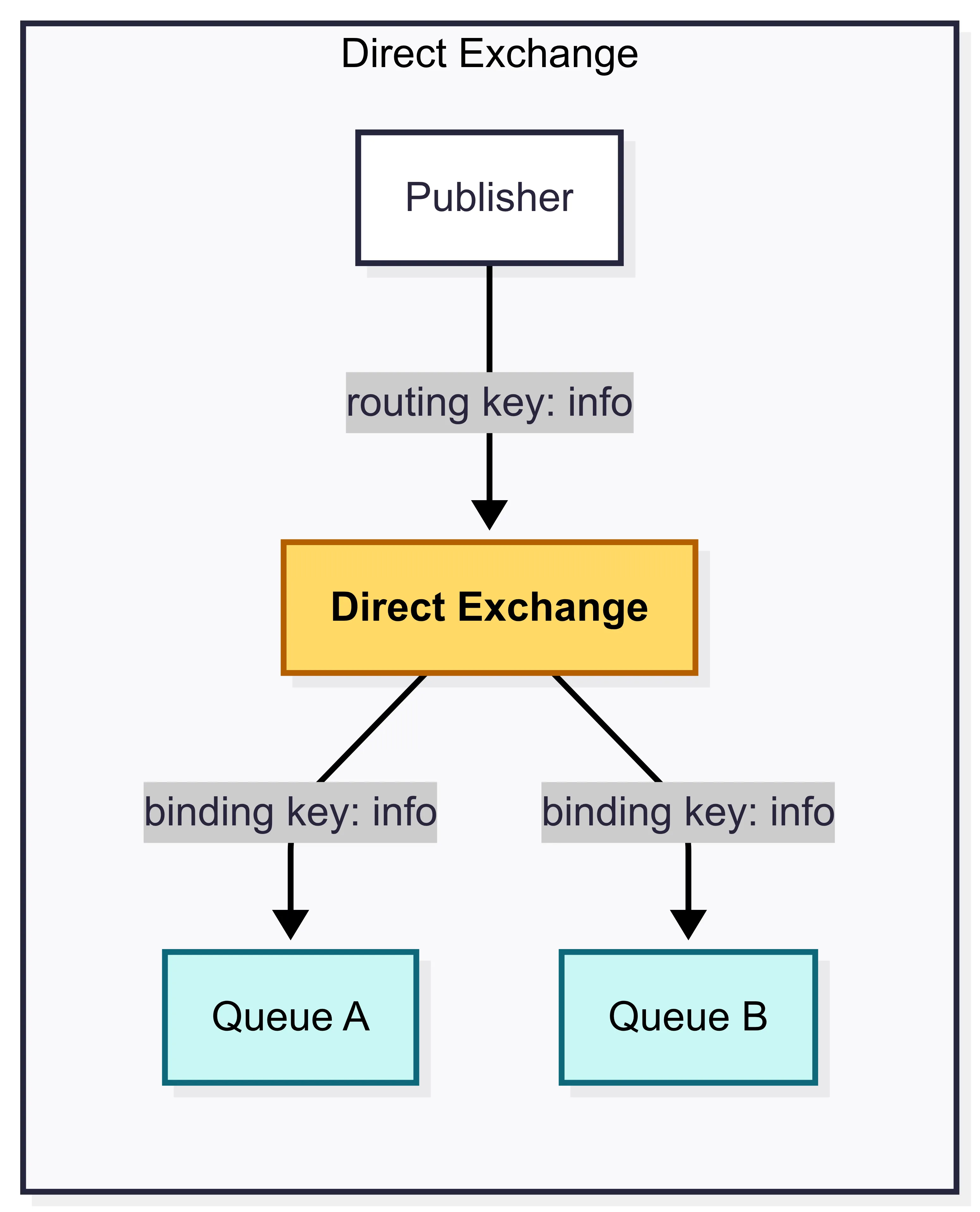
- A queue is bound to the exchange using a routing key
K - When a new message with routing key
Rarrives at the direct exchange, the exchange routes it to any queue whereK == R - If multiple queues are bound to the exchange with the same routing key
K, the exchange delivers the message to all queues that satisfyK == R
Fanout Exchange
- A fanout exchange sends messages to all queues bound to the exchange, ignoring the routing key
- It’s commonly used for broadcast scenarios
- For example use cases, see the document
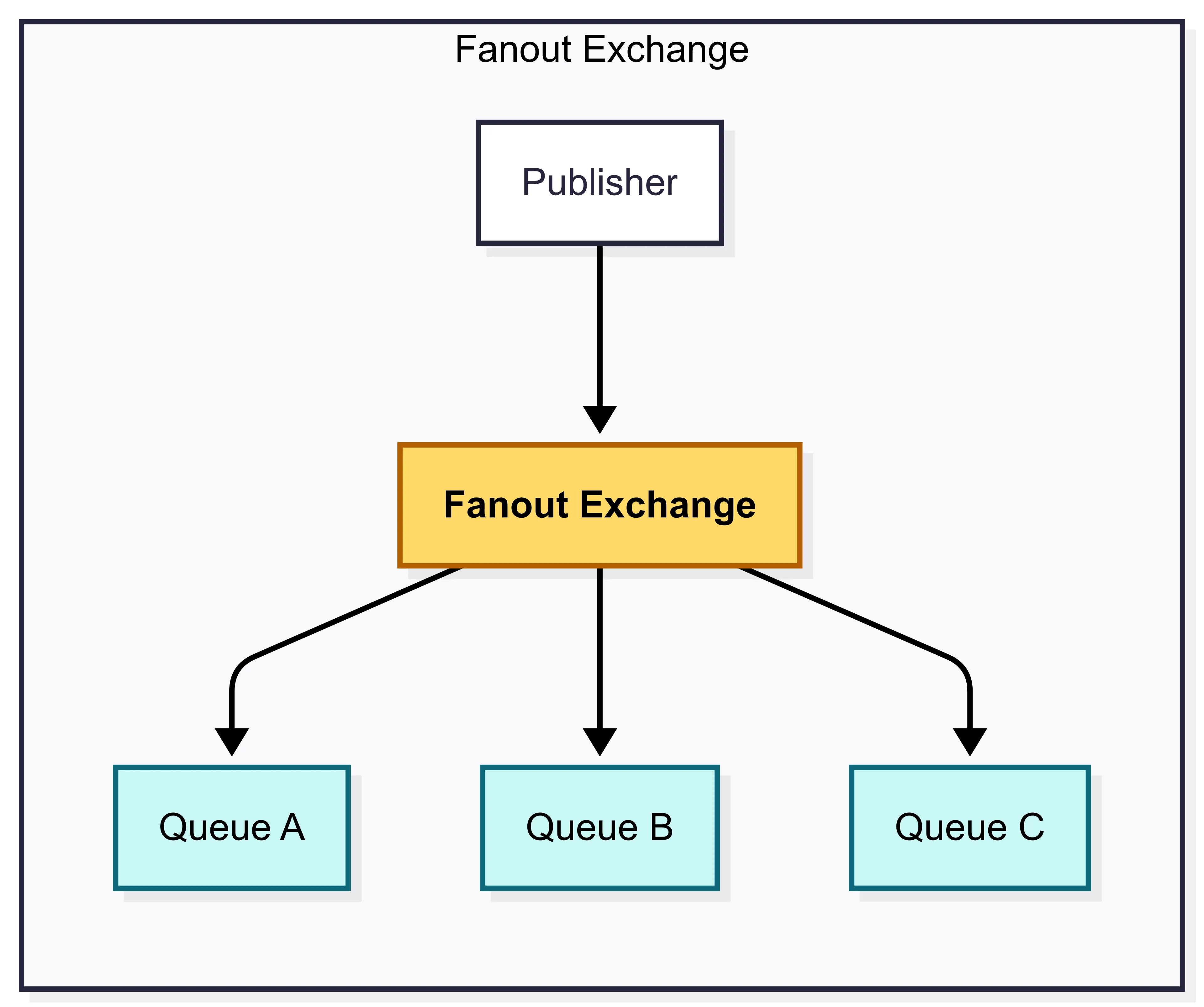
Topic Exchange
- A topic exchange routes messages to one or more queues based on pattern-matching routing keys
- It’s commonly used in publish/subscribe models and is frequently applied in multicast message delivery
- For example use cases, see the document
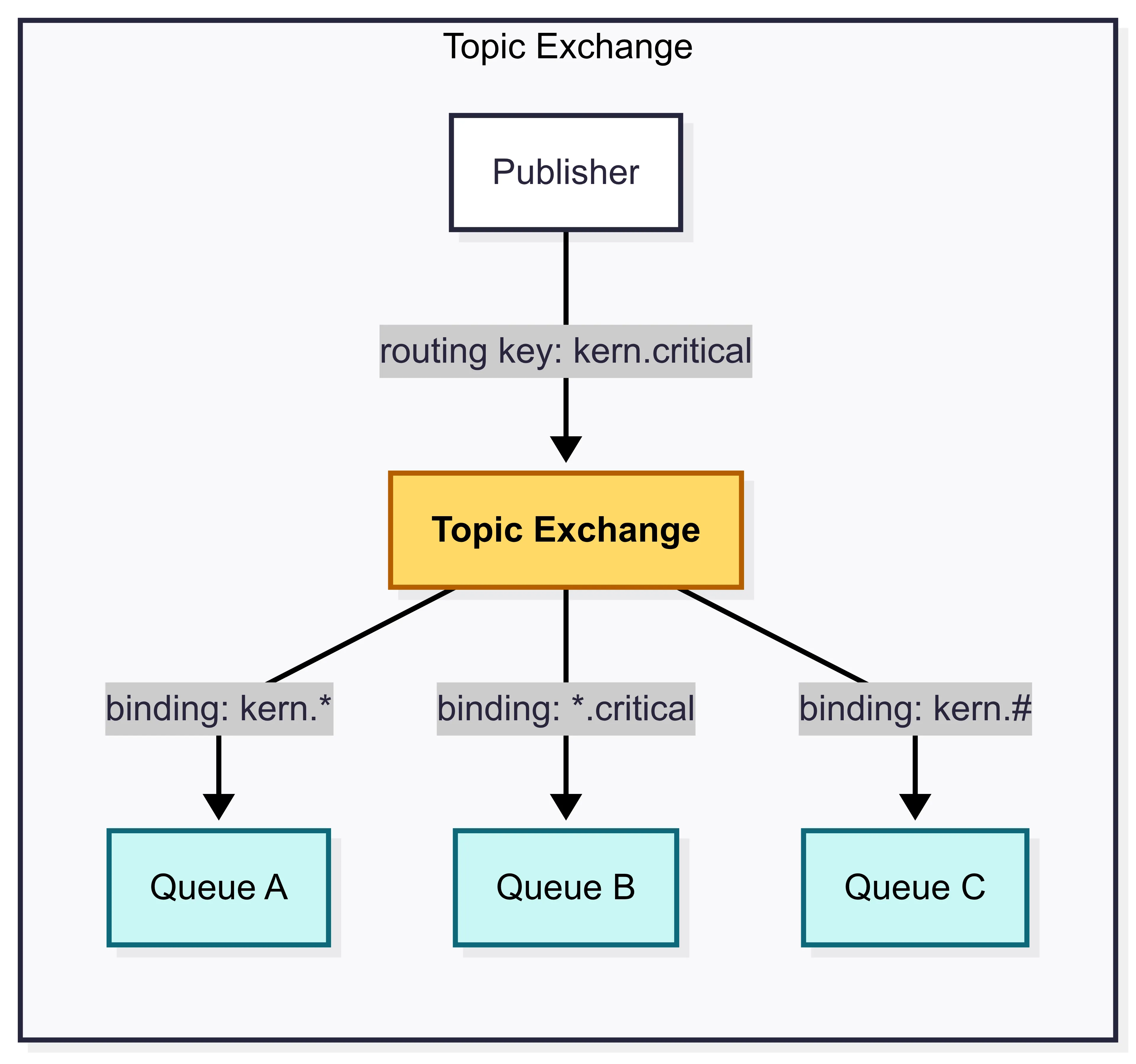
Headers Exchange
- A headers exchange doesn’t use routing keys; instead, it matches messages based on headers
- It allows for flexible, pattern-like matching using headers, which can be strings, integers, or even hashes (dictionaries)
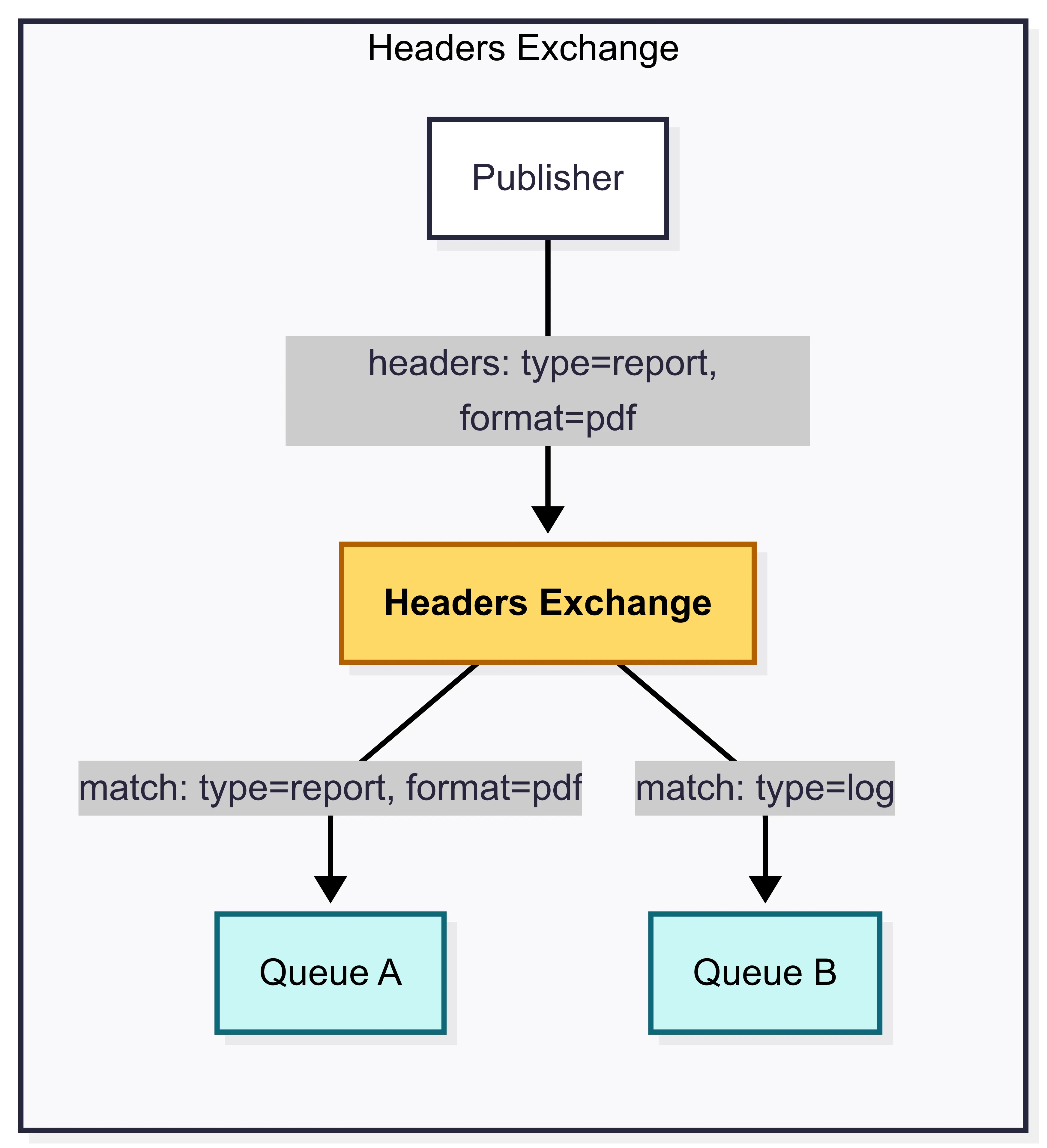
Queues
A queue stores messages that are delivered to consumers.
In AMQP 0-9-1, queues can be categoriezed as either durable or transient. A durable queue stores its metadata on disk, while a transient queue stores it metadata in memory.
Bindings
A binding defines the rules that an exchange uses to route messages to queues based on the routing key (similar to a filter). If no matching queue is found, the message will either be dropped or returned to the publisher, depending on the user’s configuration.
Connections and Channels
- AMQP 0-9-1 uses a long-lived TCP connection
- It adopts a channel-based design, which allows multiple channels to share a single TCP connection
- Channels are isolated from each other and are identified by a channel ID, which helps the broker and client distinguish between them
